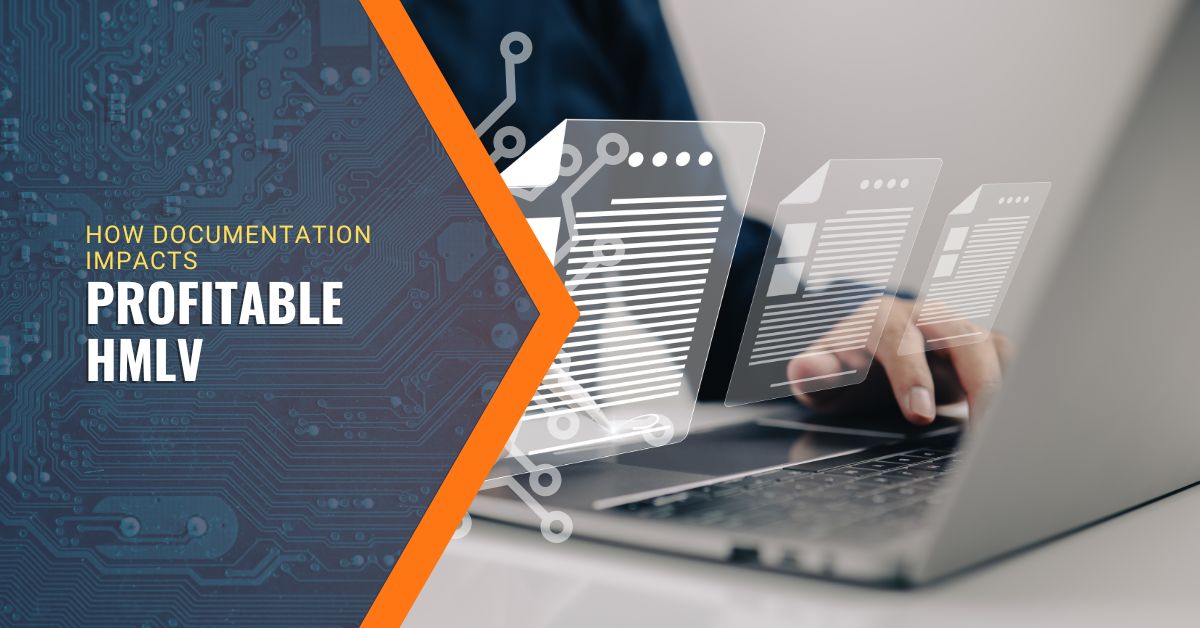In high-mix, low-volume manufacturing, documentation has an impact. It sets the foundation for consistency, communication, and performance across engineering and production. Engineering drawings and bills of materials serve as essential production tools. They connect design decisions to the steps required to build accurately and efficiently.
Documentation creates a shared language. It’s how teams know what to build, how to build it, and how to check if it was built correctly. In high-variability environments where each job is different, that clarity is critical. You’re not producing thousands of the same part. You’re constantly switching builds, tools, and specifications. Documentation becomes the system that holds all that complexity together.
Strong documentation supports profitability by reducing rework and preventing delays. It makes handoffs between departments faster and more accurate. When build processes are clearly defined, teams spend less time asking questions and more time producing. That kind of understanding scales. In HMLV environments, where pace and variation are high, even small miscommunications can create cascading costs. Better documentation means fewer mistakes and smoother operations.
Start with Standards
Templates and standardized document formats help eliminate guesswork. When every drawing, BOM, or process sheet follows the same structure, it’s easier to review, update, and share. Teams don’t have to figure out how to read the documentation. They already know how to navigate it.
Standards also support scalability. As operations grow and new people are onboarded, consistent documentation makes it easier to maintain quality. Whether it’s a mechanical drawing or an inspection checklist, predictable formats make it easier to spot what’s missing or out of place.
Make Documentation Visual
Words are helpful. Diagrams are better. Visual documentation can cut interpretation errors significantly. Photos, illustrations, and exploded views make it easier for production teams to understand assembly steps or critical tolerances. The more that can be communicated visually, the less risk of misreading or misunderstanding.
For example, a single photo of a properly routed cable might save dozens of words in a written instruction. A color-coded drawing might help highlight inspection points faster than a paragraph ever could. In fast-moving environments, time saved interpreting documentation is time gained on the floor.
Connect to the Workflow
Documentation isn’t useful if it isn’t available. That means it needs to be where the work happens. Whether it’s a paper traveler or a digital workstation, the documentation should be easy to find and even easier to use.
Tie documentation to workstations, not filing cabinets. Use QR codes to link to the latest versions of drawings. Keep version histories clean and make sure teams know how to access updates. A well-documented process is only effective if people follow it. Accessibility makes that more likely.
Keep It Current
Stale documentation creates expensive mistakes. Revision control, change logs, and version visibility should be part of the workflow. When changes happen, the right people need to know, and fast. Otherwise, teams might build to outdated specs or use incorrect materials.
Good documentation systems include built-in review cycles. When something changes upstream, documentation should follow downstream. That includes not just the BOM or drawing, but also any setup instructions, inspection requirements, or assembly guides that might be affected.
Use Documentation as a Training Tool
Well-executed documentation supports production and accelerates training. New team members can get up to speed faster when instructions are clear and consistent. Cross-training becomes easier. Troubleshooting gets more efficient.
For teams trying to grow without slowing down, documentation becomes a force multiplier. It allows experience to be captured and shared. It reduces reliance on tribal knowledge and lets new people add value sooner.
Drive Continuous Improvement
Documentation is a living tool, so don’t think of it as a one-and-done project. That means it should evolve with your processes. When teams discover better ways to do things, those improvements should make their way into the official documentation. Otherwise, innovation gets siloed and progress is lost.
Encourage feedback from production teams on what’s working and what’s unclear. Use change logs and revision tracking to manage updates. Treat documentation as part of the product and not just a byproduct of engineering.
From Instructions to Impact
In HMLV environments, documentation is a strategic advantage. Treat every drawing and BOM like a build script. Make documentation easy to access and quick to update. Set standards that improve handoffs and reduce downtime. When documents support execution, they help work move faster and mistakes happen less often. That’s how they become a lever for profitability and not just a record of intent.

